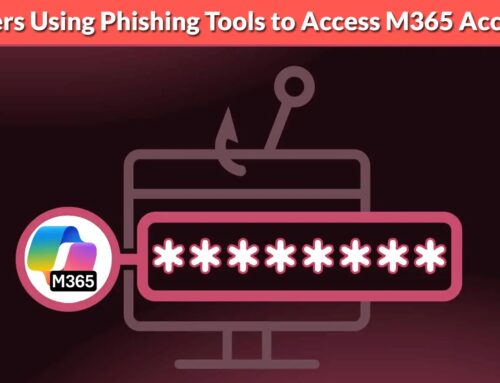
CISA Adds PaperCut NG/MF CSRF Vulnerability to KEV Catalog Amid Active Exploitation
Urgent Alert: PaperCut NG/MF CSRF Vulnerability Added to CISA KEV Catalog Amid Active Exploitation
The cybersecurity landscape is a dynamic battlefield, where emerging threats constantly challenge the defenses of organizations worldwide. In a recent and critical development, the U.S. Cybersecurity and Infrastructure Security Agency (CISA) has issued a stern warning, adding a high-severity vulnerability affecting PaperCut NG/MF print management software to its Known Exploited Vulnerabilities (KEV) catalog. This action underscores the immediate threat posed by this flaw, as it is actively being exploited in the wild. For IT professionals, security analysts, and system administrators, understanding and mitigating this vulnerability is not merely a recommendation, but an immediate imperative.
This post delves into the specifics of this critical Cross-Site Request Forgery (CSRF) vulnerability, its potential impact, and crucial remediation steps to safeguard your infrastructure. Staying informed and proactive is the first line of defense against sophisticated cyber threats.
Understanding CVE-2023-2533: A Critical CSRF Vulnerability
The vulnerability in question, identified as CVE-2023-2533, carries a CVSS score of 8.4, classifying it as a high-severity flaw. It’s a Cross-Site Request Forgery (CSRF) bug impacting PaperCut NG/MF, popular print management software used across various industries.
A CSRF vulnerability occurs when a malicious website, email, or program causes a user’s web browser to perform an unwanted action on a trusted site where the user is currently authenticated. In the context of PaperCut NG/MF, this means an attacker could potentially trick an authenticated user into executing unintended actions within the application without their knowledge. While the exact scope of exploitation for CVE-2023-2533 isn’t fully detailed in the CISA alert, the active exploitation indicates a significant risk to the confidentiality, integrity, or availability of affected systems.
For more detailed information on this specific CVE, refer to the official NVD entry: CVE-2023-2533.
Why is CISA’s KEV Catalog Listing Significant?
CISA’s KEV catalog serves as a critical resource for federal agencies and, by extension, all organizations responsible for managing cybersecurity risk. When a vulnerability is added to this catalog, it signifies two crucial points:
- Active Exploitation: CISA has concrete evidence that the vulnerability is being actively exploited by malicious actors in real-world scenarios. This moves the threat from theoretical to an immediate, tangible risk.
- Mandatory Action: For U.S. federal civilian executive branch agencies, addressing vulnerabilities in the KEV catalog is not optional; it’s a mandatory requirement with specific deadlines. This highlights the urgency and severity of the threat.
The inclusion of CVE-2023-2533 in this catalog means that organizations using PaperCut NG/MF should treat this vulnerability with the utmost priority.
Potential Impact of Exploitation
The nature of a CSRF vulnerability dictates that an attacker could leverage it to perform actions on behalf of a legitimate, authenticated user. For a robust print management solution like PaperCut NG/MF, this could lead to various detrimental outcomes, depending on the privileges of the compromised user account. Potential impacts could include, but are not limited to:
- Unauthorized modification of print jobs or settings.
- Manipulation of user accounts or group policies within PaperCut.
- Disruption of printing services, leading to operational downtime.
- Potential for further compromise if the print management system is integrated with other critical services.
Remediation Actions: Securing Your PaperCut NG/MF Environment
Given the active exploitation of CVE-2023-2533, immediate action is paramount. Follow these remediation steps to protect your PaperCut NG/MF deployments:
1. Patch Immediately
The most crucial step is to apply the security updates provided by PaperCut. Ensure your PaperCut NG/MF installation is updated to a version that addresses CVE-2023-2533. Refer to the official PaperCut support and security advisories for specific patch information and upgrade paths. Always test patches in a non-production environment first, if feasible, before deploying to production.
2. Review Logs and Hunt for Indicators of Compromise (IoCs)
Even if you patch, it’s essential to check for signs of prior compromise. Review your PaperCut NG/MF system logs, network traffic logs, and any associated server logs for unusual activity. Look for:
- Unexpected configuration changes.
- New or modified user accounts.
- Unusual login patterns or failed login attempts.
- Outbound connections from the PaperCut server to suspicious external IP addresses.
3. Implement Network Segmentation and Principle of Least Privilege
While not a direct fix for the vulnerability, these are essential security best practices:
- Network Segmentation: Isolate your print management servers on a dedicated network segment or VLAN, limiting their direct exposure to less trusted networks.
- Least Privilege: Ensure that the service accounts and administrative users for PaperCut NG/MF only have the minimum necessary permissions to perform their functions.
4. Enhance User Training and Awareness
Since CSRF vulnerabilities often rely on social engineering to trick authenticated users, reinforced security awareness training is beneficial. Educate users about phishing attempts, suspicious links, and the importance of only interacting with trusted websites.
5. Implement Web Application Firewall (WAF) Rules (If Applicable)
A properly configured Web Application Firewall (WAF) can add a layer of protection by detecting and blocking malicious requests (including certain CSRF attacks) before they reach the application. Consult your WAF vendor’s documentation for relevant rules or signatures.
Security Tools for Detection and Mitigation
Leveraging appropriate tools can significantly aid in identifying and mitigating such vulnerabilities. Here’s a brief overview:
| Tool Name | Purpose | Link |
|---|---|---|
| PaperCut NG/MF Release Notes | Official source for vulnerability patches and updates. | PaperCut Support |
| Vulnerability Scanners (e.g., Tenable Nessus, Qualys, OpenVAS) | Detecting known vulnerabilities and misconfigurations in network-connected systems. | Tenable Nessus / Qualys VMDR / OpenVAS |
| Security Information and Event Management (SIEM) Systems | Aggregating and analyzing logs for anomalous activity and potential breaches. | Various Commercial/Open Source Solutions (e.g., Splunk, ELK Stack) |
| Web Application Firewalls (WAFs) | Protecting web applications from common web-based attacks, including CSRF. | Various Commercial/Open Source Solutions (e.g., Cloudflare, ModSecurity) |
Key Takeaways for Proactive Security
The addition of CVE-2023-2533 to CISA’s KEV catalog serves as a potent reminder for all organizations:
- Prioritize the patching of high-severity vulnerabilities, especially those under active exploitation.
- Maintain a robust vulnerability management program that includes regular scanning and assessment.
- Practice defense-in-depth, layering security controls to reduce the attack surface.
- Stay informed by regularly monitoring advisories from CISA, vendors, and trusted cybersecurity sources.
By taking these immediate and long-term steps, you can significantly enhance your organization’s resilience against evolving cyber threats and protect critical infrastructure like print management systems from compromise.





